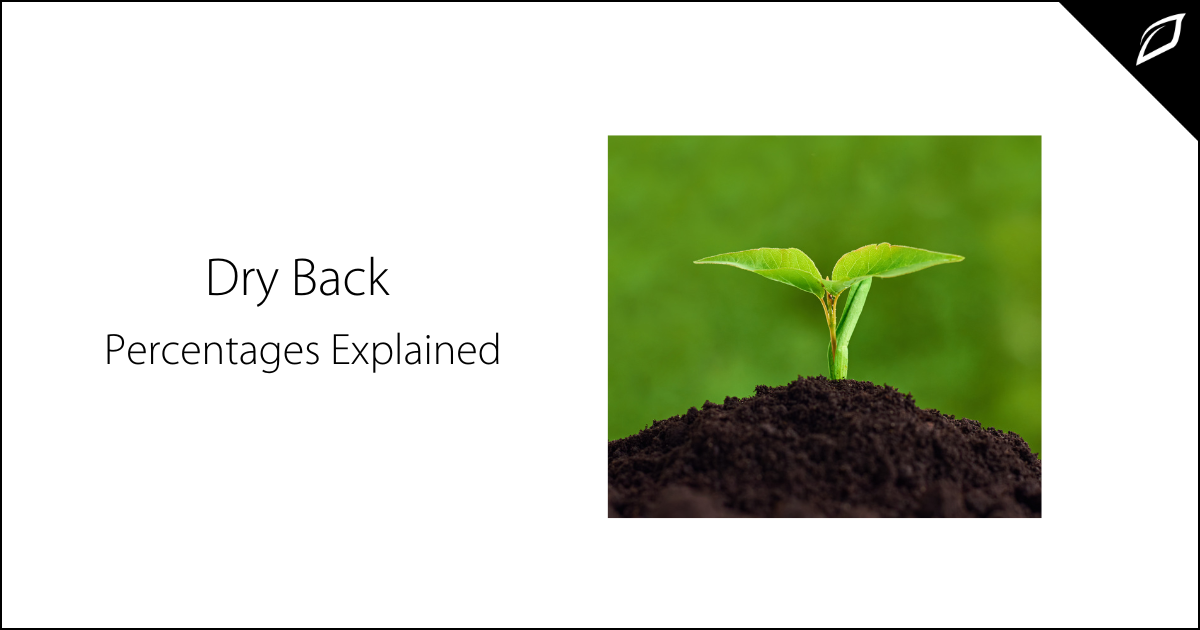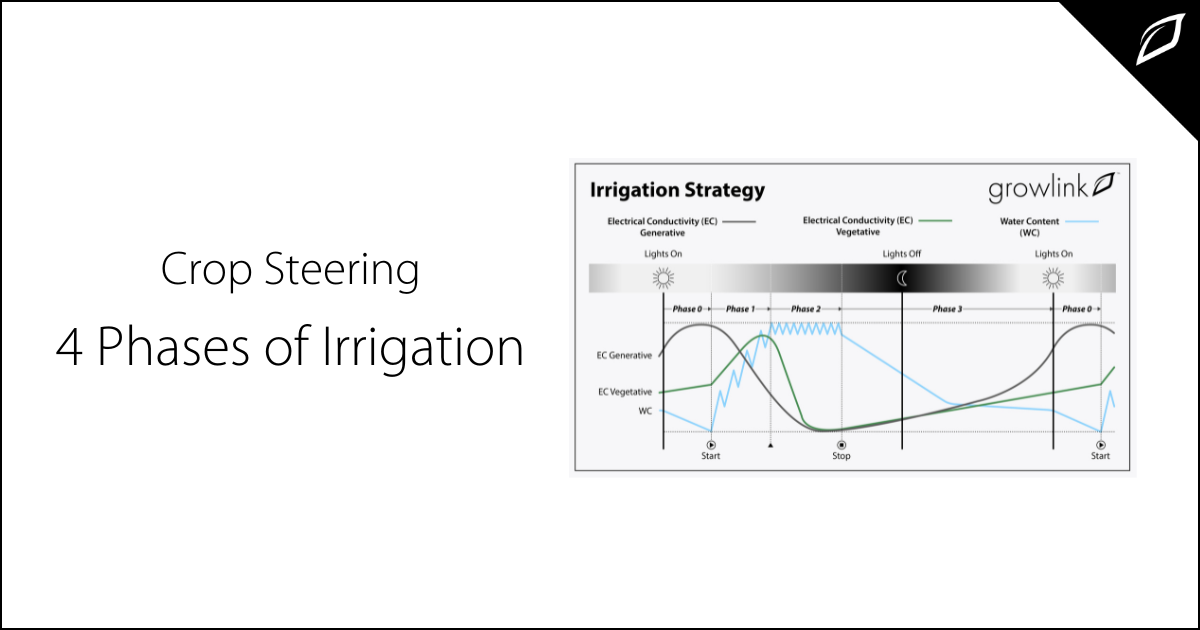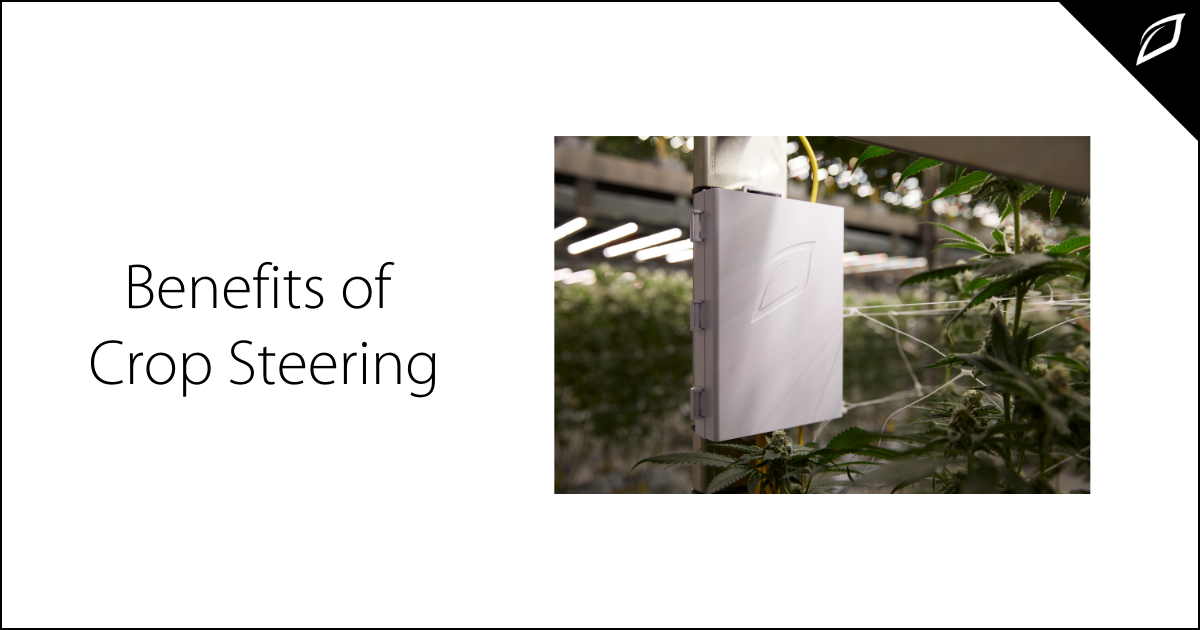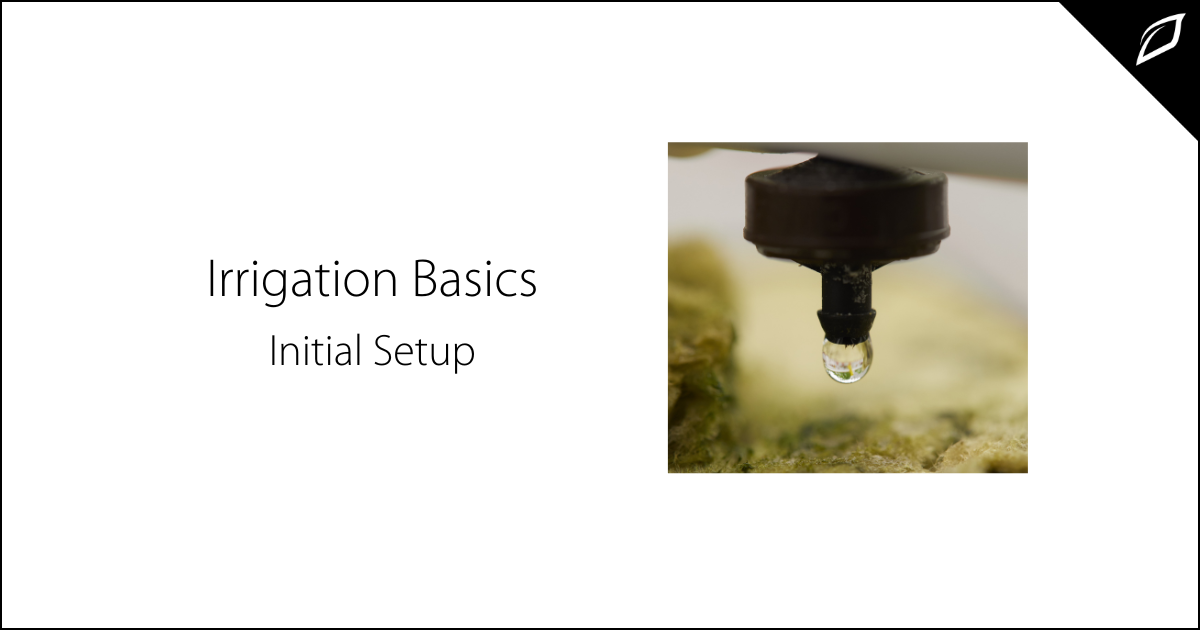Crop Steering - 4 Phases of Irrigation
Crop steering manipulates a plant's environment and root zone to influence metabolic/hormonal changes that inspire vigorous growth and greater...
2 min read
.png) Marcus Baldinger
:
Aug 15, 2022 9:44:12 AM
Marcus Baldinger
:
Aug 15, 2022 9:44:12 AM

We are often asked, “What dry back percentage should I shoot for?” Unfortunately, there is no one size fits all solution to this question. Let’s go over dry backs in a bit more detail to help you understand what they are, common target percentages, and when to adjust them.
When we use the term ‘dry back,’ we are referring to the period in between irrigation events when the substrate begins to dry out. There are short dry backs, found immediately following the overnight dry back and during the ramp-up and maintenance phases, and long dry backs, also referred to as ‘overnight dry backs.’ All dry backs play a significant role in Crop Steering but knowing how to use them is key.
Both ramp-up and maintenance dry backs share a similar purpose, to allow the previous irrigation events to disperse throughout the substrate evenly to prevent channeling. The additional dry backs and overnight dry backs serve as both indicators that the plant is actively uptaking nutrients and a means of simulating stress. A large part of crop steering is about exposing plants to controlled stress to mimic catastrophic events found in nature, eliciting a hormonal response. These hormonal responses can help bring about beneficial changes that cultivators seek, such as more numerous bud sites and reduced flowering times.
By controlling the amount of moisture the plant is exposed to over a set period, the cultivator can often trick the plant into thinking a drought is occurring, triggering a hormonal response that kicks its reproduction into overdrive to carry on its lineage before dying. Therefore, pushing larger dry backs of 15-30% while generatively steering can be extremely beneficial.
Since we want to minimize stress when steering vegetatively, keeping dry backs around 5-10% is usually enough to allow for proper oxygenation in the root zone without adding any unwanted drought stress. We cannot give specific percentages to use as every cultivar is unique. Some sensitive genetics can produce the same stress response while undergoing 15% dry backs as others that are hardier and require more extreme droughts.
When dealing with the actual numbers, questions often arise as to what they are actually referring to. Does a 30% dry back just mean 30% overall or 30% of total field capacity? While neither of these options are necessarily right or wrong, there are some major differences in what they mean. For example, if your substate field capacity was 50% and you chose the first option of using an actual dry back percentage of 30%, you would wait until your substrate reached 20% before starting to irrigate again. If you decided to use the latter option meaning it was 30% of total field capacity then you would wait until your substrate reached 35%, since 30% of 50% would equal 15% total dryback. As you can see, the two options will produce much different results.

Here at Growlink, we have chosen to go with the first option when referencing dryback percentages in both our Crop Steering eBook and our Automated Crop Steering Program, meaning we use a set overall percentage. We chose this based on our testing, where we found that some plants could handle real 30% total dry backs and produced the best results when pushed that far. If we had chosen the other route, those same plants would only have been exposed to a 15% dryback, and we would not have been able to experience them reaching their full potential.
Growers who use substrates with a lower field capacity, such as Coco Coir cut with perlite, have been reluctant to bring their substrates down to extremely low levels to hit their targeted dry backs. Often, a 30% dryback might mean letting the substrate fall to 5-10%, which can be scary, but one important thing to consider in these situations is that the substrate probes can only read the water content of the coco coir and not the perlite. Since perlite has water-holding properties of its own, it is highly likely that despite your substrate reading very low, the plants are not in danger as they have access to stored water that is not visible to the probes.
For more information on dry backs or Crop Steering in general, please check out our Crop Steering eBook here.


Crop steering manipulates a plant's environment and root zone to influence metabolic/hormonal changes that inspire vigorous growth and greater...

With so much conversation around crop steering, but with limited information available, we wanted to research why it's become such a trend in indoor,...

Picture this; you’ve built out your indoor grow room or vertical farm to perfection and loaded in multiple different genetics that you’ve been dying...